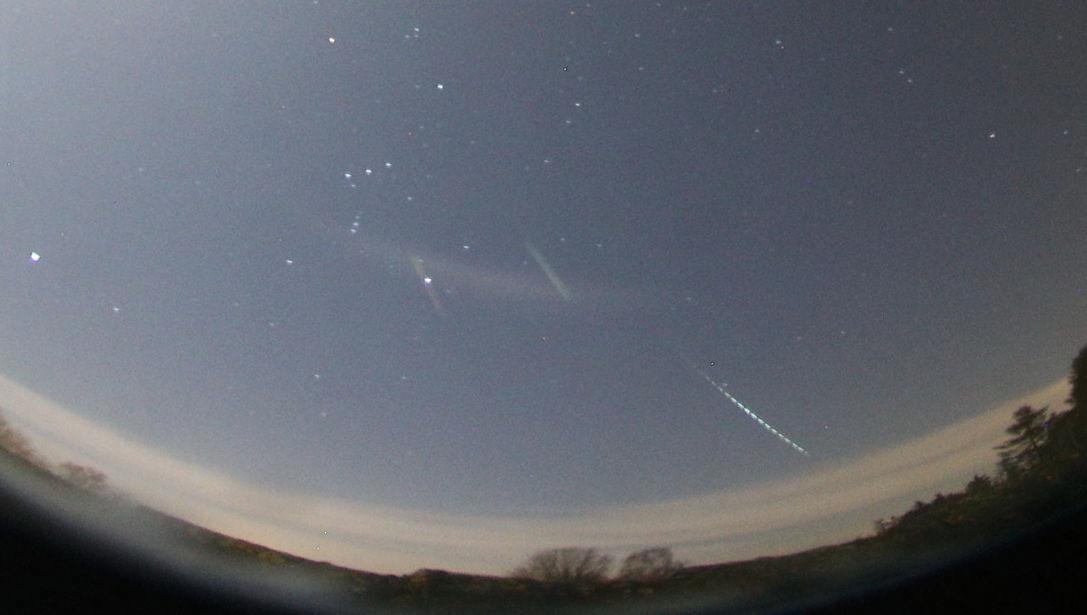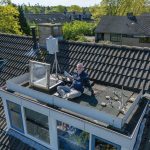Abstract
With a Full Moon on December 12 moonlight would be present all night during the Geminid maximum. So, no options for distant expeditions, but just waiting for the weather situation at home. Unfortunately, it was cloudy and rainy almost all-night December 13/14. During the day, the rain and clouds disappeared and bright clearings followed with occasional rain showers developing. However, in the evening of December 14/15, temporary clearings were expected before the next front arrived.
14/15 December 2019
The sky was not completely 100% clear, but around 18 UT the clear gaps became wider. So, I started the observations at 18:20 UT. I observed this evening from the meteor platform on my dormer. An almost Full Moon was low in the east, and the radiant was also low. I looked northwest to keep the Moon out of the field of view. Almost every moment there were a few small clouds in my field of view, but the coverage remained very low, below 10%. The observations had to stop at 20:55 UT, when clouds came in from the west. The limiting magnitude decreased from +5.7 to +5.4 in that period. As the radiant was rising during this session, more and more Geminids were seen! I was counting in periods of 10-20 minutes (see table 1). The numbers of Geminids increased from 4 to 10 per counting period. See also table 1.

Table 1. Geminid observations 14/15 December 2019 by the author.
It was very nice to see some slow Earth grazing Geminids passing through Auriga and/or Camelopardalis. A nice magnitude -1 passed through Draco, a few minutes later a -1 in the Big Dipper. The most beautiful Geminid appeared at 19:52 UT (Geminid -2 with flare moving from Casiopeia to Perseus) and at 20:12 UT (Geminid -2 in Camelopardalis).
At 20:55 UT most of the sky closed from the west, the next front with clouds and rain would arrive soon. The equipment simply remained on the roof and the undersigned went to sleep happy with the results. Despite the Moon I had still observed over 2 hours with lots of Geminids!
The images of the all sky camera show that after 21:50 UT the sky cleared again until 22:40 UT. I should have waited a bit longer. In total, I counted 55 Geminids, 1 Antihelion and 6 sporadic meteors between 18:20 and 20:55 UT (effective time 2.35 hours).
The all sky camera (Canon 6D, Sigma 8 mm F 3.5 fish eye lens and a Lyquid Crystal Shutter set at 16 breaks per second) photographed four bright Geminids. See also table 2.

Table 2. Fireballs captured with the all sky camera EN-98 during 14/15 December 2019.

Figure 1. This magnitude -3 Geminid was captured on 14 December 2019 at 22:09 UT.
Camera: Canon 6D withSigma 8 mm F 4.5 fish eye lens and LC Shutter set at1 6 breaks per second.

Figure 2. Bright magnitude -6 Geminid captured on 14 December 2019 at 23:57 UT.
camera: Canon 6D with Sigma 8 mm F 4.5 fish eye lens and LC Shutter set at 16 breaks per second.

Figure 3. This magnitude -5 Geminid is captured on 15 December 2019 at 00:10 UT.
Camera: Canon 6D with Sigma 8 mm F 4.5 fish eye lens and LC Shutter set at 16 breaks per second.






